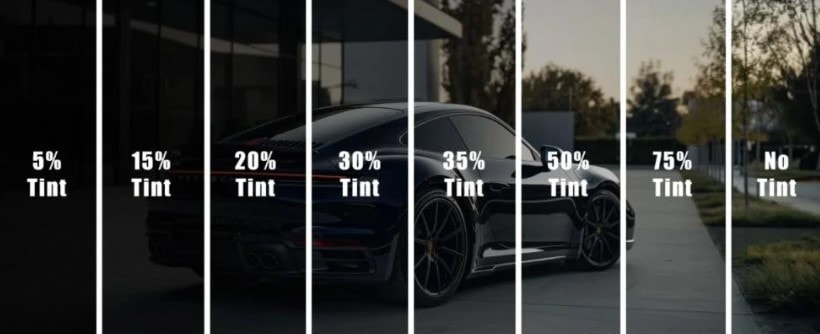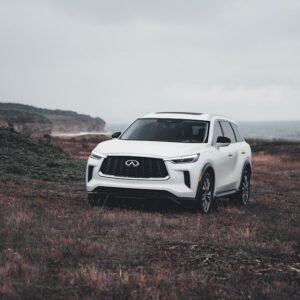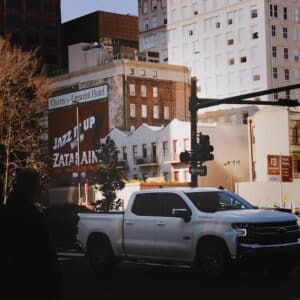
Window tint percentages refer to Visible Light Transmission (VLT) — the amount of visible light allowed to pass through your vehicle’s windows. The lower the VLT percentage, the darker the tint. For example, a 5% tint blocks 95% of visible light, allowing only 5% to pass through.
Understanding VLT is essential not only for appearance but also for functionality, comfort, and legal compliance. A darker film may enhance privacy and reduce glare, but it could also reduce visibility at night and be restricted by state law.
Ultra-dark for maximum privacy and UV protection.
This is the darkest legal tint in some states (and illegal in others), often found on the back windows of limousines. It offers near-total privacy but significantly reduces visibility at night. Use with caution, especially if you drive frequently after dark.
A sleek balance of style and practicality.
Often seen on SUV rear windows or factory-installed tints, 20% offers a sporty look with enhanced interior protection from UV rays and prying eyes. Night visibility is still relatively manageable for most drivers.
The legal limit in many states.
This is one of the most popular tint options due to its balanced benefits: improved aesthetics, glare reduction, and interior cooling — all while remaining compliant with tint regulations in many areas.
Subtle protection with a clean look.
This light tint allows 50% of light through while still blocking harmful UV rays and reducing glare. It’s a great choice if you want minimal aesthetic change but still want to protect your skin and interior from sun damage.
Choosing the right tint comes down to your lifestyle, location, and driving needs:
| Tint % | Privacy Level | Night Visibility | Legal in Most States? | Common Use |
|---|---|---|---|---|
| 5% | ★★★★★ | ★☆☆☆☆ | ✘ (check state laws) | Limos, rear windows |
| 20% | ★★★★☆ | ★★☆☆☆ | ✔ | SUVs, rear windows |
| 35% | ★★★☆☆ | ★★★★☆ | ✔✔ (very common) | Sedans, all windows |
| 50% | ★★☆☆☆ | ★★★★★ | ✔✔✔ | Front windows |
Each state has its own window tint regulations, often specifying allowed VLT percentages for front, rear, and windshield windows. To stay safe and avoid tickets, review your local tint laws before choosing your film.



